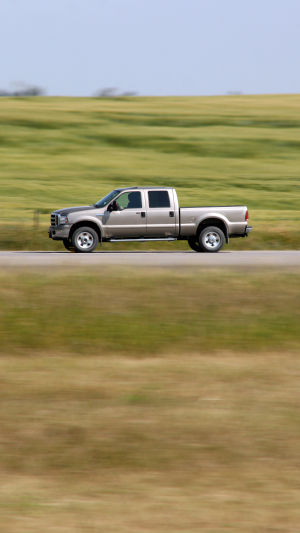While the automotive industry serves as a global connector, the driving experience varies significantly between the United Kingdom and the United States.
These differences extend beyond the obvious contrasts in driving on the left or right side of the road. From cultural preferences to industry trends, the automotive cultures in the UK and the US showcase distinct perspectives that shape the way people interact with their vehicles.
In the United States, there's a longstanding love affair with large vehicles, particularly trucks and SUVs. The spacious roads and expansive landscapes contribute to the popularity of these larger, more powerful vehicles. Meanwhile, in the UK, where roads can be narrower and petrol prices higher, there's a greater emphasis on smaller, fuel-efficient cars. Compact cars and hatchbacks are favored for their practicality and cost-effectiveness.
The US is renowned for its vibrant classic car culture. From vintage muscle cars to meticulously restored classics, Americans often have a deep appreciation for automotive history. Car shows, auctions, and gatherings celebrate the beauty of well-preserved automobiles.
In the UK, classic cars also hold a special place, with events like the Goodwood Festival of Speed showcasing the elegance and heritage of vintage vehicles. However, the emphasis on classic cars might differ in terms of models and eras. The driving experience in both countries is shaped by distinct habits and etiquette. In the US, the concept of a road trip is deeply ingrained, with vast highways offering the perfect canvas for long journeys.
The UK, with its narrower and winding roads, emphasizes precision and attentiveness. Roundabouts are a common feature in the UK, demanding a different approach to traffic management compared to the signal-controlled intersections prevalent in the US.
The US, with its sprawling landscapes, often requires longer distances to be covered between destinations. As a result, the country has a robust network of roadside services, including gas stations, rest areas, and diners. In the UK, where distances are relatively shorter, the focus is on efficient public transportation, and services are strategically placed to cater to the needs of both local and long-distance travelers.
Environmental consciousness and fuel efficiency play a more prominent role in the UK's automotive culture. Stricter emissions regulations and higher fuel prices drive a greater emphasis on sustainable transportation. In contrast, while environmental concerns are growing in the US, the vastness of the country often leads to a higher dependency on personal vehicles, with electric cars gaining momentum in recent years.
Both the UK and the US boast rich motorsports histories, contributing to their unique automotive cultures. The UK is home to iconic racing events like the Formula 1 Grand Prix at Silverstone and the Isle of Man TT motorcycle race. In the US, events like the Indianapolis 500 and NASCAR races showcase a different facet of motorsports culture, emphasizing oval track racing and high-speed competitions.
The automotive industry in both countries is marked by unique trends. In recent years, the UK has witnessed a surge in the popularity of electric and hybrid vehicles, driven by government incentives and environmental concerns. In the US, a strong market for trucks and SUVs coexists with a growing interest in electric cars and a push toward sustainability. While the love for automobiles is a universal language, the automotive cultures of the UK and the US demonstrate the fascinating interplay between geography, history, and societal preferences.
Whether it's the allure of classic cars, the nuances of driving etiquette, or the push toward sustainability, each country's automotive landscape is a reflection of its distinctive character. Exploring these differences provides a glimpse into how a shared passion for cars can take on diverse and nuanced expressions on either side of the Atlantic.





